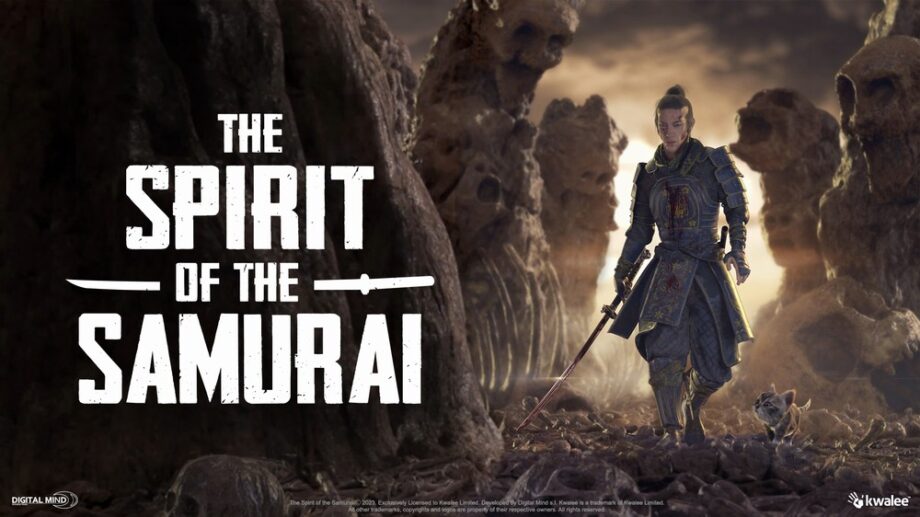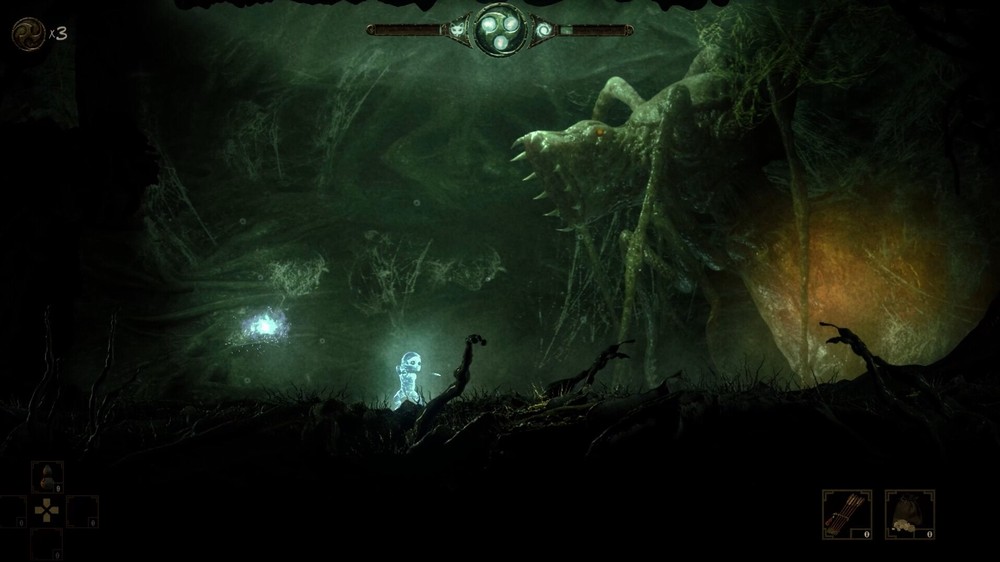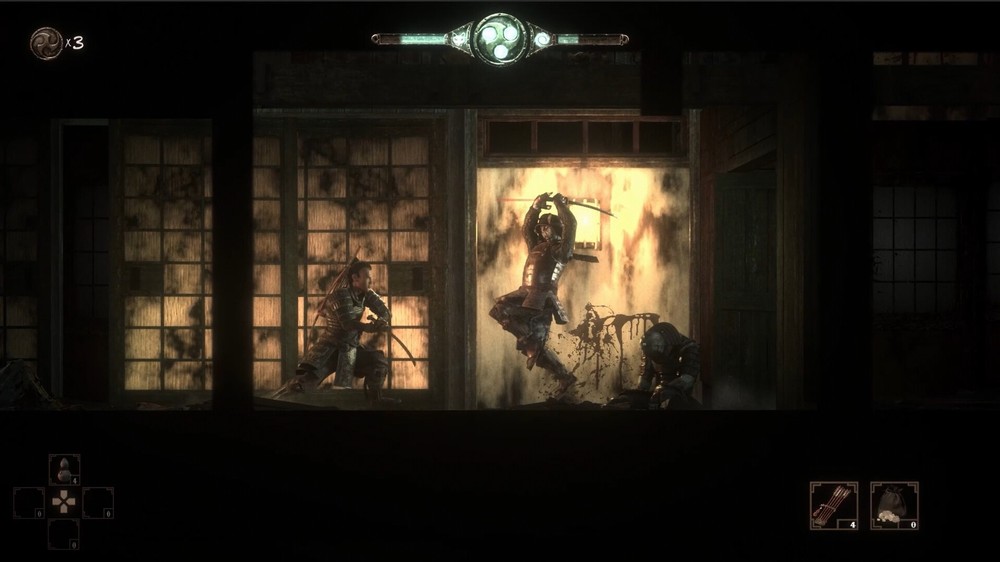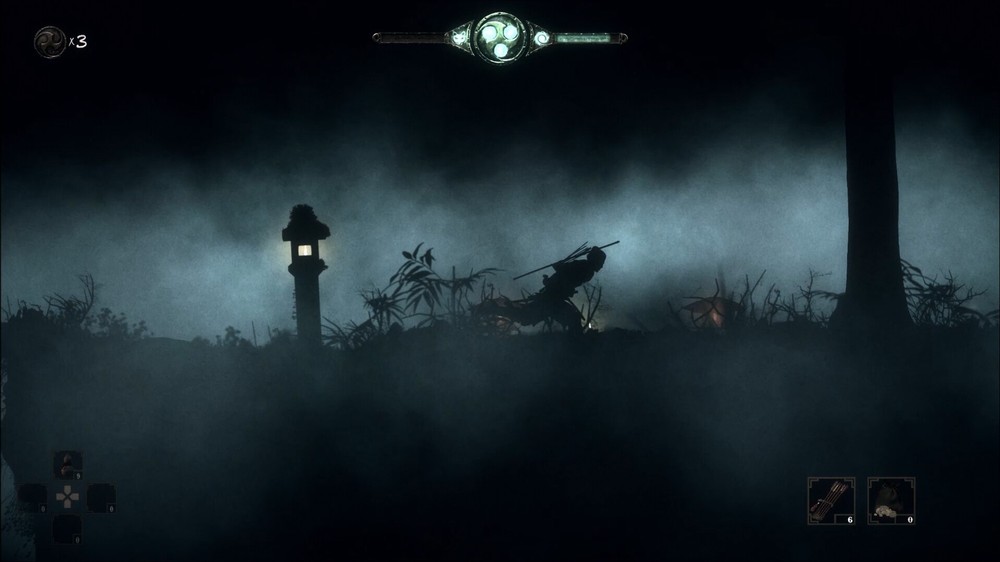Released just in time to be overlooked by game awards and consumers, one of the most visually striking games to sneak in mid-December, The Spirit of the Samurai is ready to change the way we look at side-scrolling action games. Before we even get into the game, its setting, and characters, we need to address the visual art style for The Spirit of the Samurai, which is indeed, the main thing it has going for it. My jaw dropped the first time I started this up and was greeted with visuals and a presentation I would expect from a AAA game.
Digital Mind Games has created something really special here with stunning CG art combined with ultra-high-res assets that give the game a unique FMV vibe – the closest comparison I could think of was the original Mortal Kombat that used photo-real fighters to create the various fight animations. You’ll see that same level of realism here that is combined with some amazing stop-motion animation to create a wholly unique style of gameplay with thrilling combat and bloody finishing moves I haven’t seen since the days of the Sinbad and Jason and the Argonauts movies.
This attention to detail is also seen in the lush environments that also share that uncanny photorealism while never losing touch with its stop-motion roots. It’s hard to explain in text or even screenshots; you truly have to witness this game in motion to appreciate what is going on, and there is a lot going on. Demons are descending upon your village and it’s up to you, Takeshi, your cat, and Kodama (a spirit creature) to defeat the demons and undead and save your village.
Each character offers a new style of play. Takeshi has a growing library of attacks and combos that you can customize in your combat screen. As you play the game you will unlock new moves that can be assembled in this fun pictogram attack board where you place individual moves into unlockable slots in your combo creator. This part of the game is truly ingenious, as it allows you to tailor the game to your own style and really personalize the character and their abilities. There are sections of the game where you also get to play as Chisai, your adorable cat, as well as Kodama, a glowing spirit creature. Kodama has some of the more interesting levels that play with light and darkness, creating something I haven’t experienced since the Ori games.
The side-scrolling exploration, combat, and trap avoidance found in The Spirit of the Samurai definitely gives off familiar Prince of Persia vibes, especially the first time you step on a pressure plate and get gutted by a spike trap. The hack-and-slash combat is surprisingly involved thanks to those custom fight moves and the combo builder. Shrines are scattered about the levels offering you chances to upgrade your abilities and purchase supplies. It’s a smooth and steady rise in progressing that seems well-matched to the challenges you’ll be facing, although a few of the bigger boss battles will prove challenging, but even those will fall when you discover their tactics and weakness.
Controls are excellent and perfectly suited for a gamepad, allowing you to freely attack with the right stick or a button press. Takeshi can also use a bow to unleash arrows for ranged attacks, block and parry, and perhaps the most useful move in the game, dodge roll. Perfecting this dodge roll is critical in winning many of the battles such as the guy with the shield and spear. If you can time your roll just as he kneels but before he thrusts his spear you can roll behind him and execute two 3-hit combos that will slay the menace. Roll dodging seems to work better than parrying in nearly every situation, so always keep an eye on that dexterity attribute.
Health and life are handled with a system that give you three lives fueled by a health bar. If the bar depletes you lose a life, but it is this same energy that is used to fuel your more powerful attacks, so you have to balance your aggression with staying alive. Stocking up on health potions and farming the energy from your fallen enemies will keep this meter full, and don’t forget to loot bodies for random items that may prove useful.
Expect anywhere from 6-10 hours to complete The Spirit of the Samurai, and while the game opens very strong things slowdown in the middle before wrapping up with a very satisfying ending that hopefully teases more to come in this universe. There is some obvious padding in the content with missions that will have you going back and forth over the same area multiple times, especially early on. There are a few points in the game where it gets oppressively hard, and these aren’t even boss fights. A few encounters definitely need to be rebalanced, but I was able to overcome them all, even if it required just stepping away from the game to realign my Chi. I did enjoy the variety of playable characters and the nuances they added to the gameplay, mixing up melee samurai combat with feline exploration and the magical abilities of Kodama.
The Spirit of the Samurai is the complete package with stunningly original visuals that combine photorealistic assets with a quirky stop-motion feel to create something I have never seen in my 50 years of gaming. It’s the same feeling I had when I walked into my 80’s arcade and saw my first laserdisc game using real video. The combo builder and fight system are outstanding, and while the fight controls are excellent, the game definitely needs some work in the platforming areas of jumping and grabbing. There was a certain spider boss where I must have died 20-30 times because I couldn’t reliably jump to the ledge where you had to be standing to attack.
Overall, I had a blast with The Spirit of the Samurai. I was sucked in by the visuals then fell in love with the combo builder but was ultimately captivated by the entire presentation. The stylish cinematic cutscenes, the incredible voice acting, and the customizable gameplay all combine to make The Spirit of the Samurai one of those indie darlings you don’t want to miss, especially if you are a fan of intense action-combat games created in the style of the original Prince of Persia.















